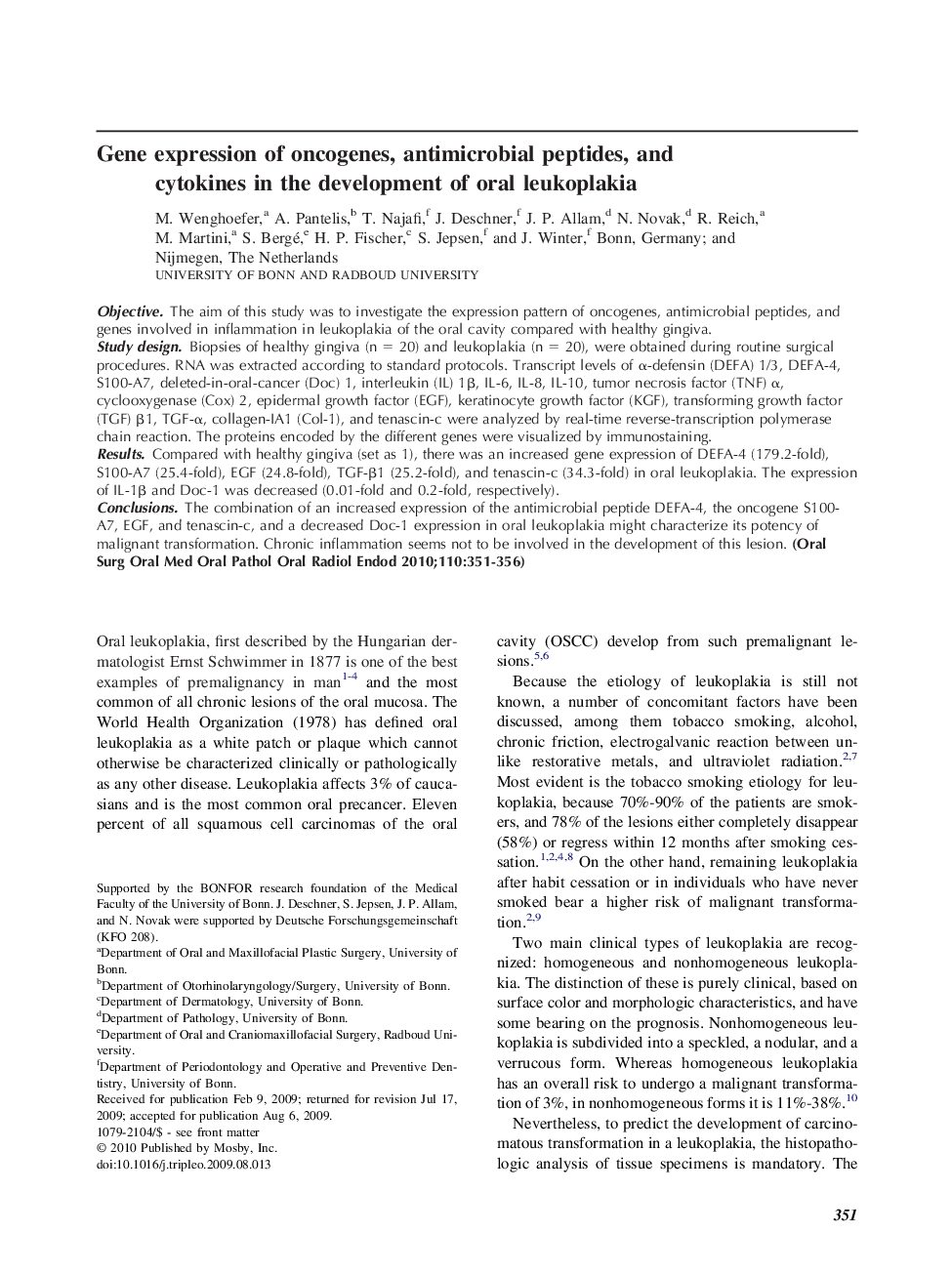| Article ID | Journal | Published Year | Pages | File Type |
|---|---|---|---|---|
| 3167422 | Oral Surgery, Oral Medicine, Oral Pathology, Oral Radiology, and Endodontology | 2010 | 6 Pages |
ObjectiveThe aim of this study was to investigate the expression pattern of oncogenes, antimicrobial peptides, and genes involved in inflammation in leukoplakia of the oral cavity compared with healthy gingiva.Study designBiopsies of healthy gingiva (n = 20) and leukoplakia (n = 20), were obtained during routine surgical procedures. RNA was extracted according to standard protocols. Transcript levels of α-defensin (DEFA) 1/3, DEFA-4, S100-A7, deleted-in-oral-cancer (Doc) 1, interleukin (IL) 1β, IL-6, IL-8, IL-10, tumor necrosis factor (TNF) α, cyclooxygenase (Cox) 2, epidermal growth factor (EGF), keratinocyte growth factor (KGF), transforming growth factor (TGF) β1, TGF-α, collagen-IA1 (Col-1), and tenascin-c were analyzed by real-time reverse-transcription polymerase chain reaction. The proteins encoded by the different genes were visualized by immunostaining.ResultsCompared with healthy gingiva (set as 1), there was an increased gene expression of DEFA-4 (179.2-fold), S100-A7 (25.4-fold), EGF (24.8-fold), TGF-β1 (25.2-fold), and tenascin-c (34.3-fold) in oral leukoplakia. The expression of IL-1β and Doc-1 was decreased (0.01-fold and 0.2-fold, respectively).ConclusionsThe combination of an increased expression of the antimicrobial peptide DEFA-4, the oncogene S100-A7, EGF, and tenascin-c, and a decreased Doc-1 expression in oral leukoplakia might characterize its potency of malignant transformation. Chronic inflammation seems not to be involved in the development of this lesion.
